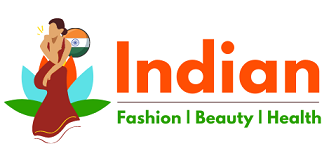Fashion is no longer the only bastion of the fairer sex in India. From time immemorial men have been making a fashion statement that has made an impact on stage dress of the country. As the Indian nation is seen to wear clothes without seams that are, for example, the lungi, dhoti, sari, etc. But with the advent of some modernization change in dress habits of men have undergone innovation. In a span of only twenty years made garment industry has grown a thousand times and the famous Mangala Market in Calcutta that runs every Tuesday has an estimated turnover of Rs. 7.8 million rupees per day. Clothing made from a large industry which exports almost 30 percent and the balance 70 percent is for the Indian market. Export figures are estimated to touch Rs. 4. 000 million rupees in 1991, but unfortunately, the figures for the local market are not available due to the disordered nature of the company. However, a rough estimate of the points of Rs. 12,000 million rupees, with a gap of fifty-fifty men and women's clothing.
New brands enter the fray every season, along with men's clothing shops sprouting in every nook and corner. Nemes as Ensemble, Glitterati, Intermezzo Linea, San Anja, riot are aimed at the rich to the market buyer whose perference is exclusive to the high price of the dress. Narindra Kumar, a graduate of the National Institute of Fashion Technology and now Ensemble Studios designer, elegant fashion house in Bombay, which opened in 1987 fashion, a trend of couture clothing for men and women in India comments, "There is a remarkable growth in men's clothes and this can be attributed to foreign influence, the film scene in India and the acceleration of trained designers and fashion houses. Even the man in the street is aware of current fashion, but sells women's clothes, the men are more fashion conscious. "Undoubtedly, the Indian man is still considered conservative by Western standards, and requires a little push to be a little adventurer. Men's wear in India can be divided into two distinct groups, Indians and Westerners. The former has made rapid progress in the formal business on the side, while the second is sub-divided into formal suits and sportswear.
Use in India: With the revival of a renewed interest in the greatness of the past and finding the roots of the attention is focused on high fashion Indian wear. Shines with the splendor and style of the ancient Maharajas and Mughal emperors wear the rich heritage of India has not only moved to center stage, but sometimes has swept the western foot of pure fashion for its majesty. The Sherwani, the Prince or Jodhpuri coat, jacket or Nehru Budni and the churidar kurta have returned to the forefront of fashion. At the height of the British Raj have been completely Western formal concept was what was done by the Indian princes to use the more elaborate costumes. With the advent of Independence was a return to classical Indian wear hand-spun cloth. Used today competes fiercely with the use western India as the country's ancient culture and fashion has gained momentum. The Sherwani is the traditional garment of India. Extra length is over 110 inches and makes a structured body garment simplified. The neck seam is 3-4 inches. The colors are dark and muted fabrics can range from a terrywool broacade. The Sherwani is usually associated with Aligarh Churidars or pants that are a combination of Churidars and pants. Another version of the Sherwani is double breasted with an opening or asymmeterical. Two inseam pockets and side vents gaint of 25-35 cm is a need in the garment.
To relax the first man informal Indian perference is the combination Kurta / churidar lightweight cotton mills, pure silk or polyester. The Kurta or shirt without a collar or is or with a plain band. The body of the garment or might have the 2-piece 6-piece cut. Modern versions can be covered with an effect as well. Indian churidar or trousers cut on the cross and ane xtra length so that in case of wear that stretches the ankles. The churidar Kurta and both are in muted colors with delicate embroidery around the neck and tonal placket of Kurta.
The Bundi or Bundgala time is the traditional West Indian version or a vest that gives you instant style churidar kurta an informal otherwise. Perferred raw silk fabrics are cotton, linen, silk, terrycotton, terry wool or brocade and sultry climate of India Bundi is the answer to formal wear.









